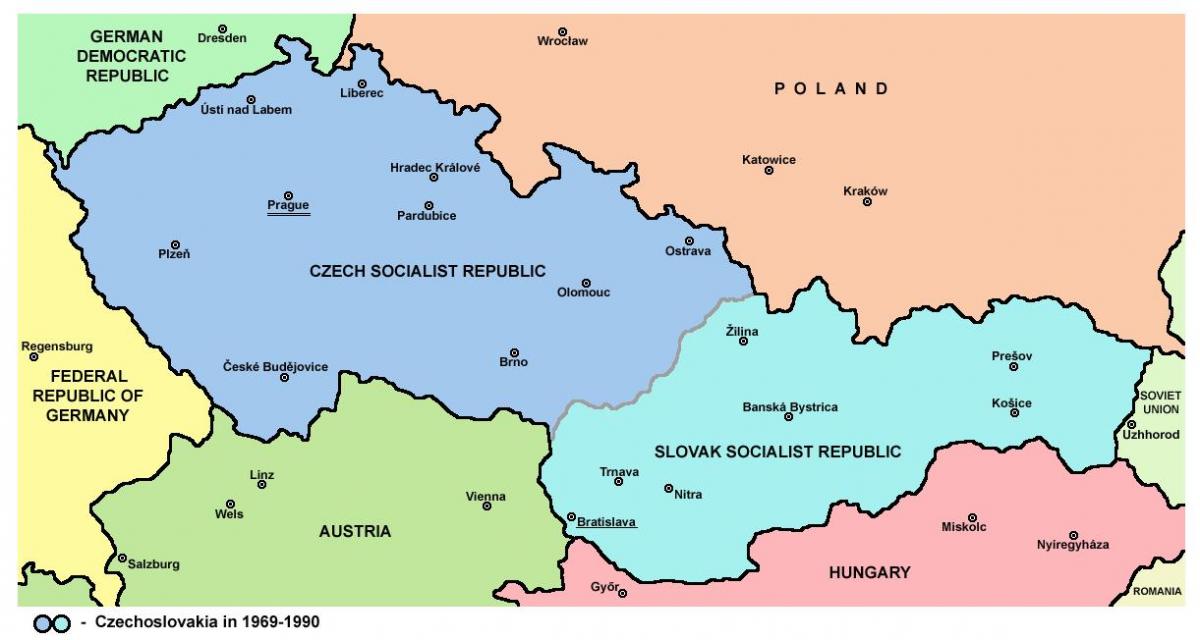search
Czechoslovakia map
Map of Czechoslovakia. Czechoslovakia map (Eastern Europe - Europe) to print. Czechoslovakia map (Eastern Europe - Europe) to download. With the collapse of the Habsburg monarchy at the end of World War I, the independent country of Czechoslovakia (Czech, Slovak: Československo) was formed, encouraged by, among others, U.S. President Woodrow Wilson. The Czechs and Slovaks were not at the same level of economic and technological development, but the freedom and opportunity found in an independent Czechoslovakia enabled them to make strides toward overcoming these inequalities as its shown in Czechoslovakia map. However, the gap between cultures was never fully bridged, and the discrepancy played a continuing role throughout the seventy-five years of the union.
The creation of Czechoslovakia in 1918 was the culmination of the 19th-century struggle of identity and ethnicity politics as its mentioned in Czechoslovakia map. The Czechs, as one subject group of a multi-ethnic, multi-linguisitic empire, lived primarily in Bohemia. With the rise of national revival movements (Czech National Revival, Slovak National Revival instigated by Ľudovít Štúr), mounting tensions combined with religious and ethnic policies (such as the Slovaks' resistance to Magyarization by their Hungarian rulers as Slovakia was largely part of the Hungarian controlled region of the empire) to push the empire to the breaking point.
During World War I, in 1916, together with Edvard Beneš and Milan Štefánik (a Slovak astronomer and war hero), Tomáš Masaryk created the Czechoslovak National Council. Masaryk in the United States, Štefánik in France, and Beneš in France and Britain worked tirelessly to gain Allied recognition. Around 1.4 million Czech soldiers fought in in World War I, 150,000 of them died as you can see in Czechoslovakia map. More than 90,000 Czech volunteers formed the Czechoslovak Legions in Russia, France and Italy, where they fought against the Central Powers and later with White Russian forces against Bolshevik troops. At times controlling much of the Trans-Siberian railway and being indirectly involved in the hasty execution of the Tsar and his family. Their goal was to win the Allies support for the independence of Czechoslovakia.
The independence of Czechoslovakia was officially proclaimed in Prague on October 28, 1918 in Smetana Hall of the Municipal House as its shown in Czechoslovakia map, a physical setting strongly associated with nationalist feeling. The Slovaks officially joined the state two days later in the town of Martin. A temporary constitution was adopted and Tomáš Masaryk declared president on November 14. The Treaty of St. Germain, signed in September 1919 formally recognized the new republic. Ruthenia was later added to the Czech lands and Slovakia by the Treaty of Trianon (June, 1920). There were also various border conflicts between Poland and Czechoslovakia.


